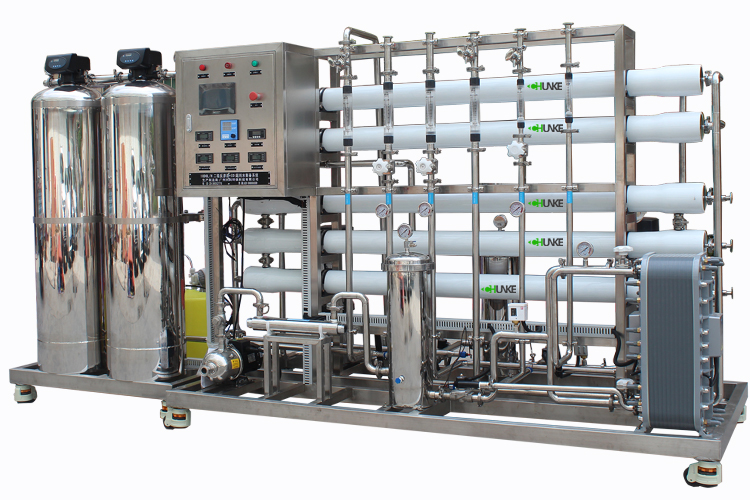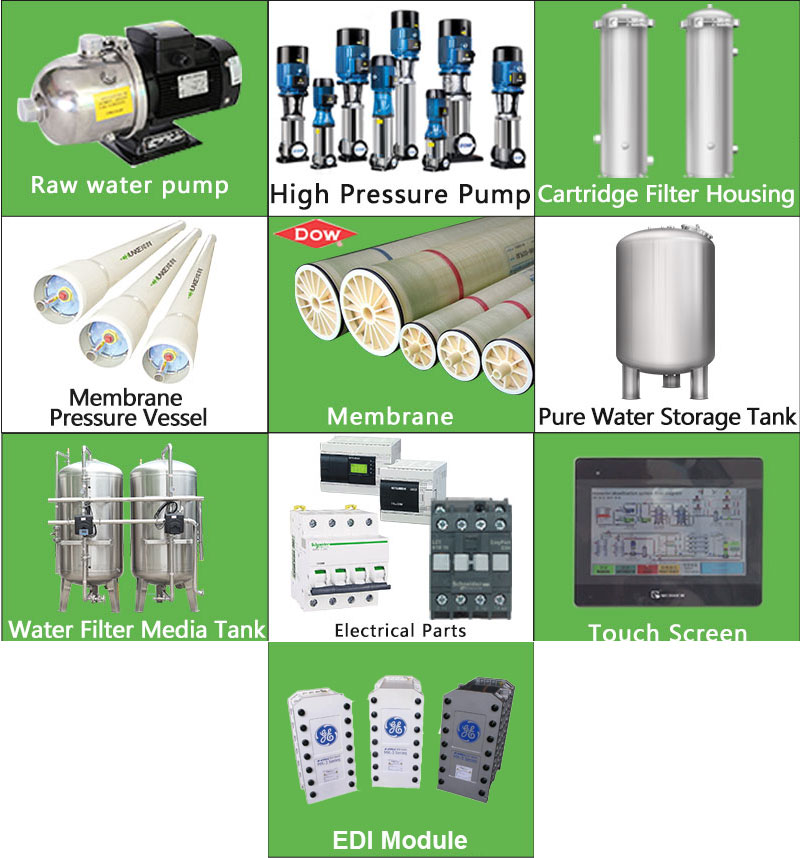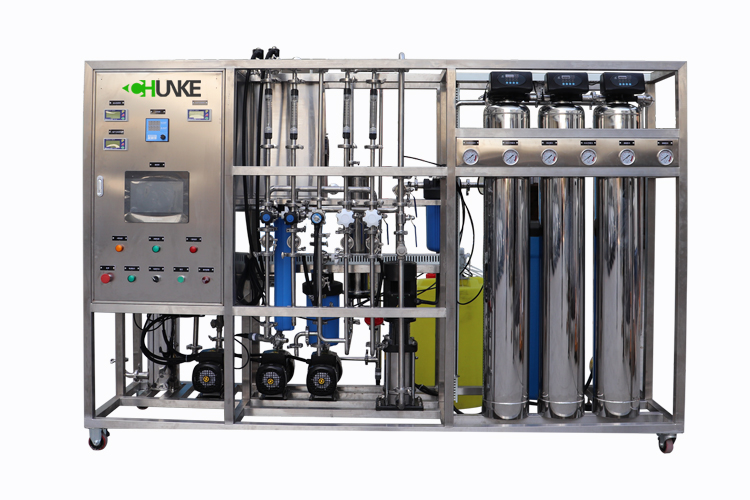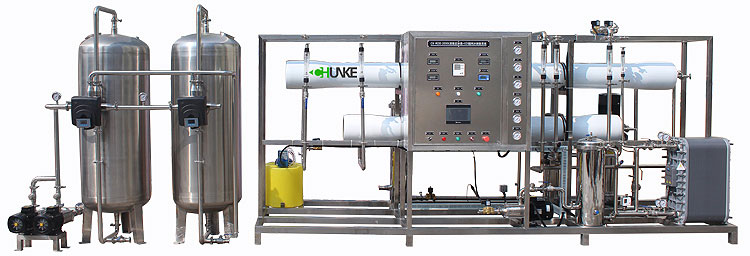What are the best purifiers for filtering groundwater? What are their Pros and Cons?
Groundwater is an important source of water for many households and communities. However, due to geological conditions and human activities, groundwater may contain various contaminants, such as heavy metals, microorganisms, organic compounds, etc.
Therefore, it is crucial to choose the right purifier to filter groundwater. This article will introduce several purifiers that are best for filtering groundwater and analyze their advantages and disadvantages to help readers make a wise choice.

What are the best purifiers for filtering groundwater?
The best purifiers for filtering groundwater are:
1. Reverse osmosis (RO) purifier,
2. Activated carbon filter,
3. Ultraviolet (UV) purifier,
4. Ion exchange purifier,
5. Ceramic filter purifier.

1. Reverse osmosis (RO) purifier:
1.1 Working principle of reverse osmosis purifier:
Reverse osmosis purifier uses a semipermeable membrane to separate water molecules from dissolved impurities under high pressure. Water molecules can pass through the semipermeable membrane, while most pollutants (such as heavy metals, microorganisms, salts, etc.) are retained on one side of the membrane, thereby achieving the purpose of purifying water quality.
1.2 Advantages of reverse osmosis (RO) purifiers:
● Efficient removal of pollutants: Reverse osmosis purifiers can remove more than 90% of dissolved solids, heavy metals, bacteria, viruses and organic compounds in groundwater, providing high-quality drinking water.
● Wide range of applications: Suitable for treating various types of groundwater, including hard water and contaminated groundwater.
● Improve the taste of water: Since most impurities are removed, the water purified by reverse osmosis usually tastes fresh and pure.
1.3 Disadvantages of reverse osmosis (RO) purifiers:
● Large amount of wastewater: A large amount of concentrated water is produced during the reverse osmosis process. Usually, 3-4 liters of wastewater are discharged for every liter of pure water produced, resulting in a waste of water resources.
● High energy consumption: A high-pressure pump is required to drive water through the semipermeable membrane, so the energy consumption is high.
● High maintenance cost: The reverse osmosis membrane needs to be cleaned and replaced regularly, which increases the maintenance cost.
2. Activated carbon filter:
2.1 Working principle of activated carbon filter:
Activated carbon filter uses the porous structure and strong adsorption capacity of activated carbon to remove organic matter, chlorine, odor and some heavy metals in water. Activated carbon particles or block activated carbon adsorb impurities when water flows through, thereby purifying water quality.
2.2 Advantages of activated carbon filter:
● Effective removal of organic pollutants: It has a strong removal effect on organic compounds, chlorine and odor, and improves the taste and smell of water.
● Simple operation: It has a simple structure and is easy to use, and does not require complicated operation and maintenance.
● Low energy consumption: It does not require electric drive, has low energy consumption, and is suitable for home and small systems.
2.3 Disadvantages of activated carbon filter:
● Cannot remove all pollutants: It has poor removal effect on soluble inorganic pollutants, bacteria and viruses, and cannot be used alone to treat severely contaminated groundwater.
● Limited adsorption capacity: The adsorption capacity of activated carbon is limited, and the filter element needs to be replaced after long-term use, which increases the cost of use.
● Easy to breed bacteria: Bacteria are easy to breed on the surface of activated carbon, and it needs to be replaced regularly to prevent secondary pollution.

3. Ultraviolet (UV) purifier:
3.1 Working principle of ultraviolet purifier:
Ultraviolet purifier uses ultraviolet rays in the UV-C band to irradiate water flow, destroy the DNA structure of bacteria, viruses and other microorganisms, and achieve the effect of sterilization and disinfection.
3.2 Advantages of ultraviolet (UV) purifier:
● High efficiency sterilization: It can quickly and effectively kill bacteria, viruses and parasites in water and provide safe drinking water.
● Does not change the chemical properties of water: Ultraviolet disinfection does not change the chemical composition and taste of water, and does not add any chemicals.
● Simple maintenance: The replacement and maintenance of UV lamps are relatively simple, and the filter element does not need to be replaced frequently.
3.3 Disadvantages of ultraviolet (UV) purifier:
● Cannot remove chemical pollutants: Ultraviolet purifiers can only sterilize and disinfect, and are ineffective against chemical pollutants such as heavy metals, inorganic salts and organic compounds.
● Requires power support: Continuous power support is required. Once the power is off, the sterilization effect will not be maintained.
● Limited lamp life: UV lamps have a certain service life and need to be replaced regularly to ensure the disinfection effect.
4. Ion exchange purifier:
4.1 Working principle of ion exchange purifier:
Ion exchange purifier uses ion exchange resin to remove hardness ions such as calcium and magnesium and some heavy metal ions in water through ion exchange reaction to reduce the hardness of water.
4.2 Advantages of ion exchange purifier:
● Effectively reduce the hardness of water: It can significantly reduce the hardness of water, prevent scale formation, and protect home appliances and pipes.
● Remove some heavy metals: It has a certain removal effect on some heavy metal ions such as lead and cadmium, and improves water quality safety.
● Widely used: It is suitable for household, industrial and commercial water treatment, with simple operation and significant effect.
4.3 Disadvantages of ion exchange purifier:
● Regeneration treatment is required: Ion exchange resin needs to be regenerated regularly and rinsed with salt water, which increases the complexity and cost of operation.
● Ineffective for organic pollutants: The removal effect of organic compounds, microorganisms and some inorganic salts is poor, and it usually needs to be used in conjunction with other purification equipment.
● Wastewater generation: The regeneration process will produce a certain amount of wastewater, which may pollute the environment if not properly handled.

5. Ceramic filter purifier:
5.1 Working principle of ceramic filter purifier:
The ceramic filter purifier uses a ceramic filter with a micron-sized pore size to remove suspended matter, bacteria and some organic matter in the water through physical filtration.
5.2 Advantages of ceramic filter purifier:
● High-efficiency filtration: The pore size is small, which can effectively intercept bacteria and suspended matter and provide clean drinking water.
● Strong durability: The ceramic filter element is sturdy and durable, not easy to damage, and has a long service life.
● Easy to clean: The ceramic filter element can restore its filtration capacity through simple cleaning, reducing the frequency and cost of replacement.
5.3 Disadvantages of ceramic filter purifier:
● Unable to remove soluble pollutants: The removal effect of soluble chemical pollutants such as heavy metals and inorganic salts is poor, and it needs to be used in conjunction with other purification equipment.
● Low flow rate: The filtration speed is slow and may not meet the demand for large-flow water.
● Easy to clog: After long-term use, the surface of the filter element is easy to be clogged and needs regular cleaning and maintenance.

Summary of the most suitable groundwater purifier
Choosing a suitable groundwater purifier requires comprehensive consideration of water quality, purification needs and economic costs. Reverse osmosis purifiers are suitable for treating severely polluted groundwater, but the amount of wastewater is large and the energy consumption is high; activated carbon filters are suitable for removing organic matter and improving water quality, but have limited effects on inorganic pollutants; ultraviolet purifiers are suitable for sterilization and disinfection, but need to be used in conjunction with other purification equipment; ion exchange purifiers are suitable for reducing water hardness and removing some heavy metals, but require regular regeneration and treatment; ceramic filter purifiers are suitable for filtering bacteria and suspended matter, but are not effective for soluble pollutants.
By understanding the advantages and disadvantages of various purifiers, consumers can choose the most suitable groundwater purification solution according to their specific needs to ensure the safety of water for families and communities.






